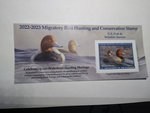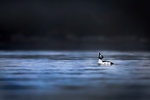

Fall and winter in our home territory is the very best time to watch waterfowl. The tall grass has died back, and all the wetlands are full (hopefully, eventually). Waterfowl are the swans, geese, and ducks; they are part of the same bird family, Anatidae, and share a number of common features. There are enough of these birds to write about for the next several weeks.
Waterfowl are fun for beginning bird watchers because they’re pretty big and easy to see, often sitting on water instead of flitting around like smaller birds. And in many cases, they have dramatic feather patterns. Their feeding patterns vary quite a bit and also help identify them. Most waterfowl are herbivorous (eat plant material), but some of them, including species common in Thurston County, are predators.
These birds have adaptions to an aquatic life. They have webbed feet for paddling around the water, and their feathers are well suited to shedding water (“like water off a duck’s back”). Thus, when in the water, they often seem to float high.
Many waterfowl take annual migrations. In mid-summer, we have only a few species present, but in the fall and winter, many return here for wintering.
Most waterfowl follow a regular pattern of post-breeding molting, which means shedding one set of feathers and growing another. First, they molt into what is called an “eclipse” plumage, with dull feather color patterns. Then, in the late summer, they molt again into their normal adult plumage. So, in the fall and winter, we have an opportunity to see them in all their most colorful feathered glory.
Ducks and geese generally are very successful breeders and often return to their wintering grounds in large numbers. Because of this and their large size, humans for centuries have hunted waterfowl and still do so today. Between now and mid-winter, you may hear shooting when you visit the Nisqually Wildlife Refuge. Hunting is permitted at some locations in the refuge.
Hunters pay license and other fees, including purchasing a federal duck stamp. Income from these sales supports wetland habitat protection. The purchase of these stamps is not limited to hunters. Many bird watchers, knowing how important it is to protect their habitat, also purchase duck stamps. They cost $25 and are available at our local refuge. Most information about the duck stamp program is on this website.
Here, by way of introduction, are two species of waterfowl. In weeks to come, there will be more.
The Common Goldeneye and the Barrow’s Goldeneye are two closely related species that spend their winters here in southern Puget Sound. Their golden yellow eye iris are distinctive. Males of both species have a white body and contrasting white and black above. A superficially similar species, the Bufflehead, is much smaller and lacks a golden iris. Their head markings are the best way to identify the two species. The common head is greenish with a roundish white patch between its eye and bill; the Barrow’s head appears purplish in good light and the white patch is a distinct crescent.
The females of these two species also have golden eyes and are very similar, with a grayish body, brownish head, and no distinctive face markings. The common female’s bill will appear black with an orange tip; the Barrow’s bill is more all-orangish. But these are subtle differences. I usually identify females by the males they are with.
These are diving ducks, often disappearing below the water for a lengthy time. They’re predators, feeding on small aquatic insects and fish. The Barrow’s is almost always seen in marine waters while the Common is found there, and also on freshwater. I often see Common Goldeneyes on lakes and along the lower Nisqually River.
In late winter and early spring, these birds will engage in elaborate courtship displays, with males competing for the attention of nearby females. It’s quite a sight and well worth looking for. And there is one last interesting thing about the flight of goldeneyes – in flight their wings make a unique whistling sound. This accounts for an old-fashioned name for these ducks: “whistlers.”
George Walter is environmental program manager at the Nisqually Indian Tribe’s natural resources department; he also has a 40+ year interest in bird watching. He may be reached at george@theJOLTnews.com
Photos for this column are provided by Liam Hutcheson, a 15-year-old Olympia area birder, and avid photographer.
Comments
No comments on this item Please log in to comment by clicking here